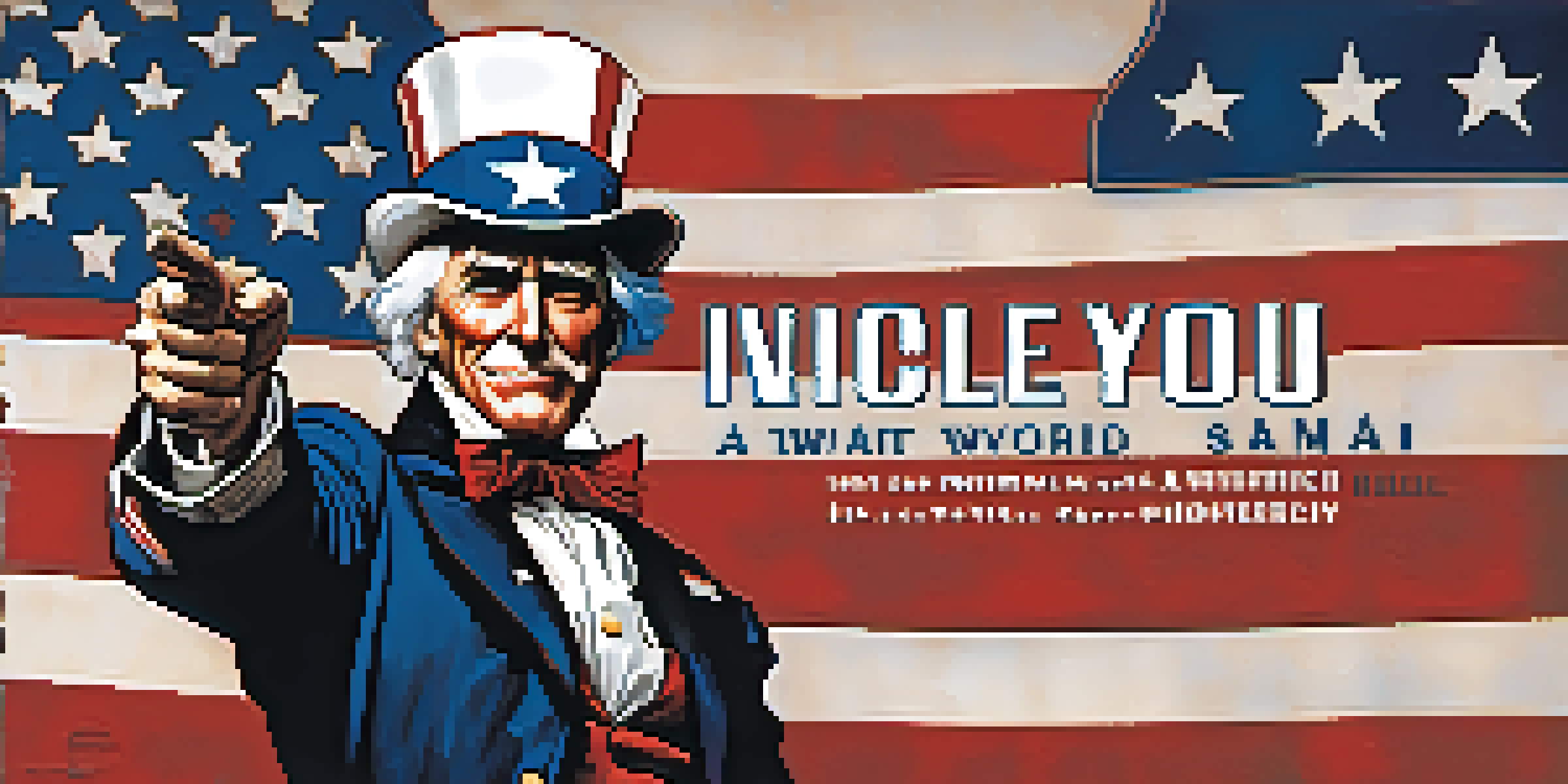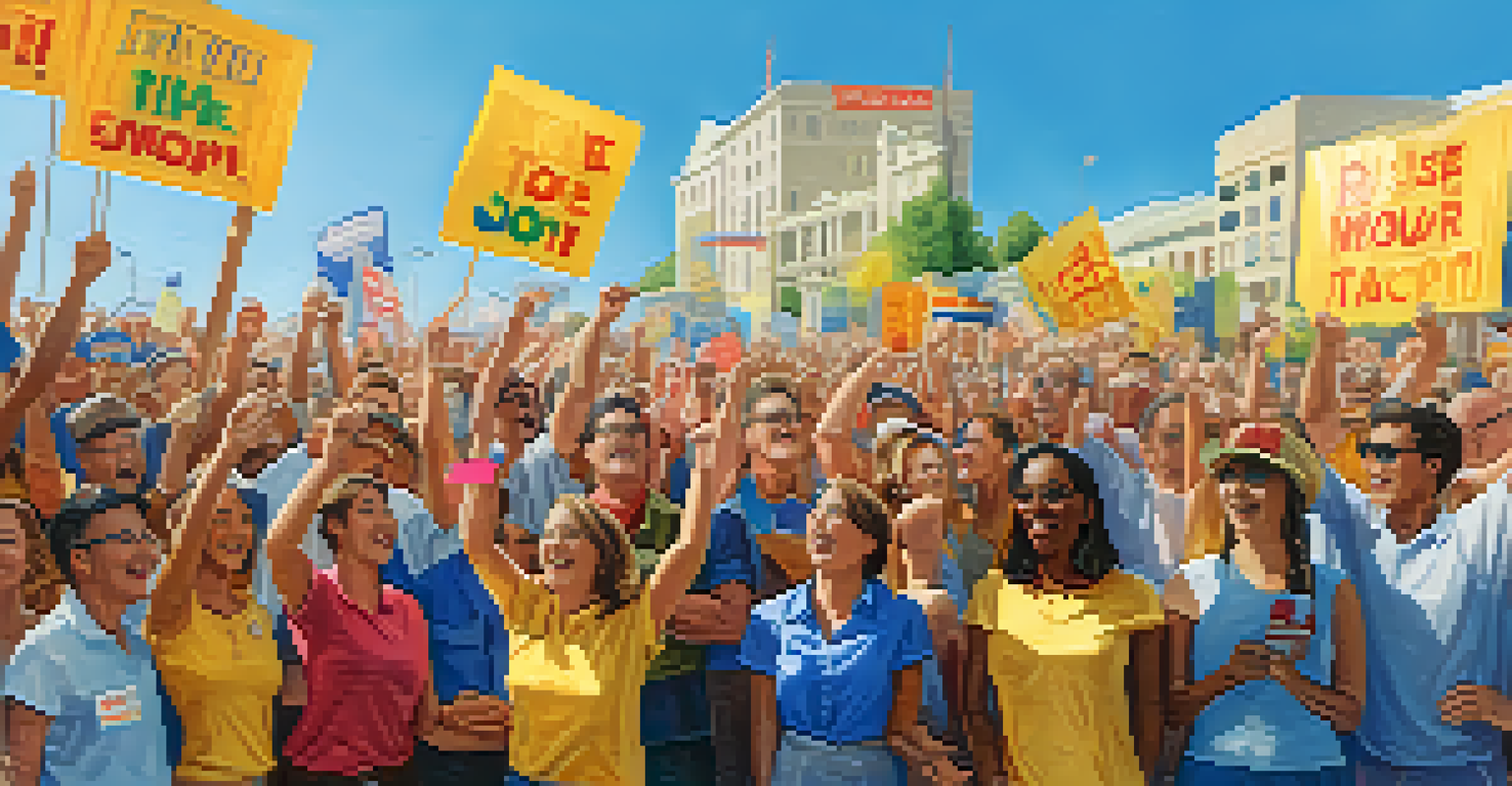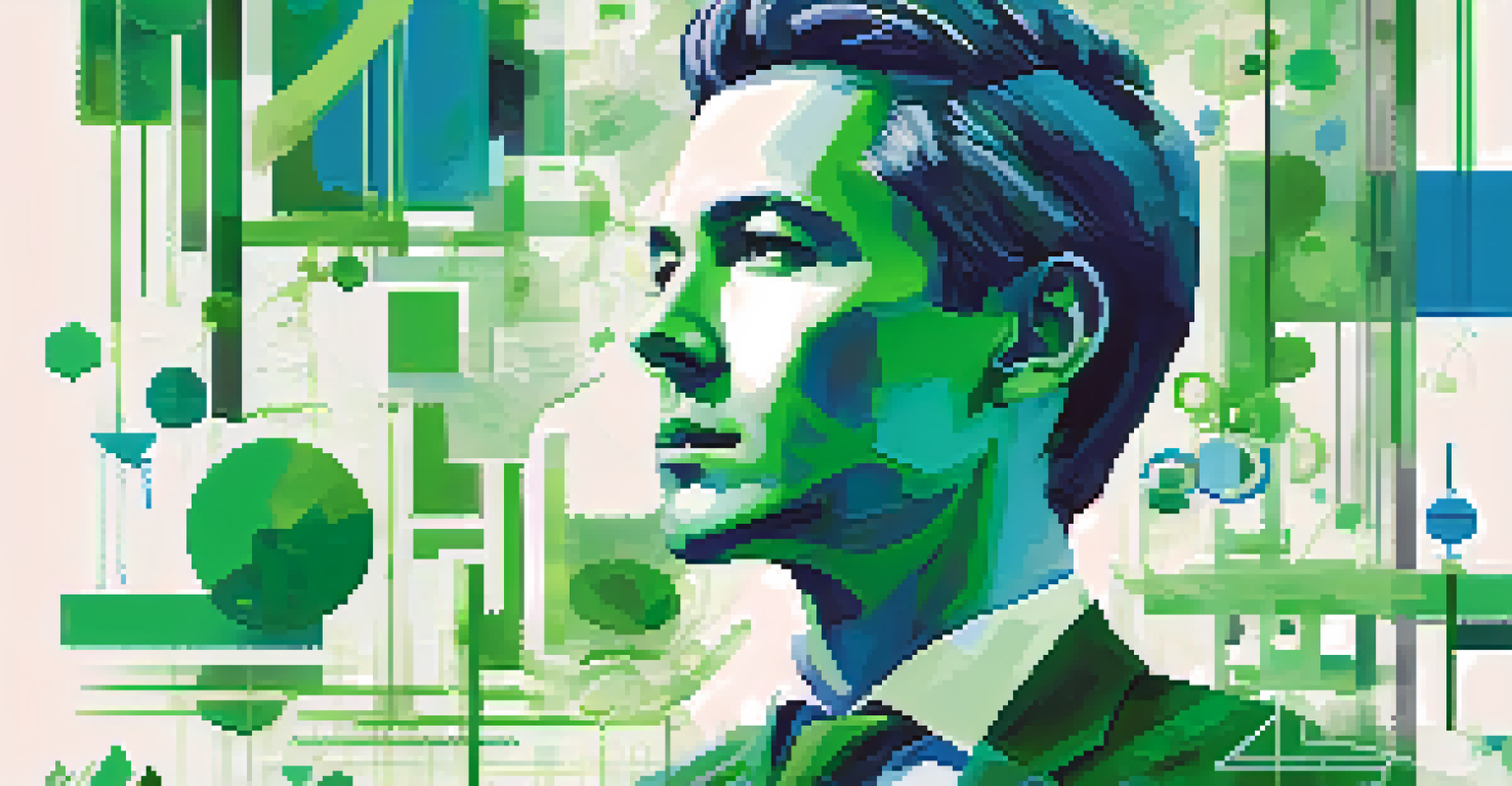The Influence of Propaganda Art in Political Campaigns

Understanding Propaganda Art and Its Purpose
Propaganda art is a strategic form of communication designed to influence people's beliefs and behaviors. It often simplifies complex messages, making them more accessible to a wide audience. By using visual elements, such as colors, symbols, and images, this art form seeks to evoke emotional responses that align with specific political agendas.
The medium is the message.
Historically, propaganda has played a crucial role in mobilizing support for various causes. From wartime posters to modern social media graphics, its presence is undeniable in political campaigns. This art not only conveys information but also shapes narratives that can lead to shifts in public opinion.
In essence, propaganda art serves to rally individuals around a common goal, whether it’s voting for a candidate or supporting a social movement. This ability to unify and motivate is what makes it an essential tool in the political landscape.
The Evolution of Propaganda Art in Politics
The use of propaganda art has evolved significantly over time, adapting to changes in technology and society. Early examples, such as World War I and II posters, relied heavily on bold imagery and catchy slogans to capture attention. As media landscapes shifted, so did the methods of disseminating propaganda art, expanding into television and, more recently, digital platforms.

Today, social media plays a pivotal role in the spread of political propaganda art. Platforms like Instagram and Twitter allow for rapid sharing of visually striking content that can go viral. This immediacy amplifies the reach of political messages, making it easier for campaigns to influence voters quickly and efficiently.
Propaganda Art Influences Beliefs
Propaganda art effectively shapes public opinion by simplifying complex messages and evoking emotional responses.
Moreover, this evolution reflects broader cultural shifts, as artists and campaigns now engage with audiences in more interactive ways. This fosters a sense of community and shared purpose, further enhancing the effectiveness of propaganda art in shaping political narratives.
Iconic Examples of Propaganda Art in Political Campaigns
Throughout history, certain pieces of propaganda art have left indelible marks on political campaigns. For instance, the famous 'I Want You' Uncle Sam poster from World War I is an enduring symbol of recruitment and patriotism. Its direct appeal and compelling imagery made it not just a call to action, but a cultural icon.
Art is the most beautiful of all lies.
More recent examples include the bold visuals used during Barack Obama's presidential campaigns. His iconic 'Hope' poster, created by artist Shepard Fairey, encapsulated a message of change and optimism that resonated deeply with voters. Such art not only reflects the candidate's message but also fosters a connection with the electorate.
These examples demonstrate how effective propaganda art can transcend its original purpose, becoming symbols of larger movements and ideas. This lasting impact highlights the power of visual storytelling in the political arena.
The Psychology Behind Propaganda Art
Understanding the psychology behind propaganda art reveals why it can be so effective in political campaigns. Visuals are processed faster than text, allowing immediate emotional reactions, which can be leveraged to sway public opinion. This emotional appeal is often more potent than rational arguments, prompting individuals to act based on feelings rather than facts.
Additionally, propaganda art often utilizes familiar symbols and archetypes, tapping into shared cultural narratives. This familiarity creates a sense of belonging, making individuals more receptive to the messages conveyed. As a result, voters may feel a stronger connection to a candidate or cause simply through the visuals presented to them.
Evolution in Digital Propaganda
The transition from traditional media to social platforms has transformed how propaganda art is created and shared, enhancing its reach.
By engaging both emotions and cognition, propaganda art becomes a powerful tool for influencing voter behavior. It not only informs but also inspires action, effectively driving the narrative in political campaigns.
The Role of Color and Imagery in Propaganda Art
Color and imagery are critical elements in the effectiveness of propaganda art. Different colors evoke distinct emotional responses; for instance, red often signifies urgency and passion, while blue conveys trust and calmness. Political campaigns strategically use these colors to create an immediate impression that aligns with their messages.
Imagery also plays a pivotal role, as it can symbolize broader themes and values. For example, a candidate might be depicted alongside national symbols like the flag or eagle, reinforcing their connection to patriotism. This visual language creates a narrative that voters can easily understand and rally behind.
By carefully selecting colors and images, political campaigns can craft a visual identity that resonates with their target audience. This attention to detail enhances the overall impact of propaganda art, making it a vital component of effective political communication.
The Ethical Implications of Propaganda Art
While propaganda art can be a powerful tool for political engagement, it also raises ethical questions. The line between persuasion and manipulation can be blurry, as campaigns may exploit emotional triggers to distort facts or mislead voters. This potential for misuse highlights the need for ethical considerations in the creation and dissemination of propaganda art.
Moreover, the impact of propaganda art can vary based on the intent behind it. Art intended to inform and unite can foster healthy political discourse, while art designed to deceive can lead to division and distrust. This dichotomy underscores the responsibility of artists and political campaigns to consider the broader implications of their work.
Ethics in Propaganda Art Use
The use of propaganda art raises ethical concerns, as it can blur the line between persuasion and manipulation in political communication.
Ultimately, engaging with propaganda art critically can empower voters to discern between authentic messages and manipulative tactics. By fostering media literacy, society can better navigate the complex landscape of political communication.
The Future of Propaganda Art in Political Campaigns
As technology continues to advance, the future of propaganda art in political campaigns is likely to evolve further. With the rise of artificial intelligence and deepfake technology, the potential for creating hyper-realistic and persuasive visuals is greater than ever. This raises both exciting possibilities and significant challenges in the realm of political communication.
Moreover, the increasing prevalence of online platforms means that campaigns must adapt to the changing landscape of how voters consume information. Engaging content that resonates with younger audiences will be crucial for future success. This shift necessitates a more innovative approach to propaganda art, blending traditional techniques with modern digital strategies.

In conclusion, while the fundamentals of propaganda art remain the same, its application in political campaigns will continue to transform. As we navigate these changes, understanding its influence will be essential for both voters and campaigners alike.